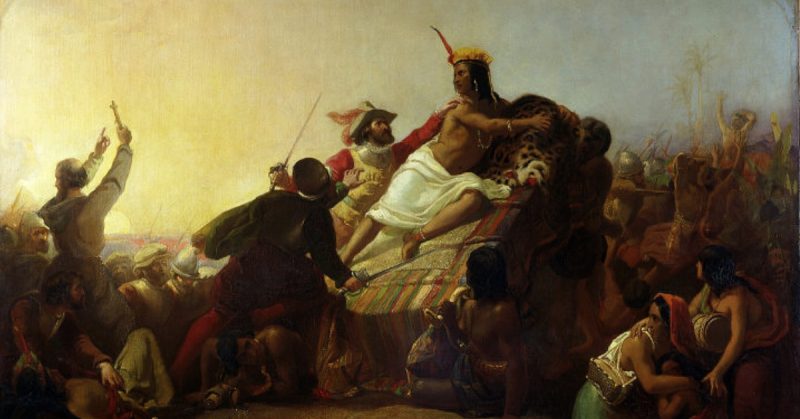Although history is full of tales of how the European conquerors’ sharp wits and quick thinking paved the way for unlikely victories against seemingly insurmountable odds, the reality is often much less glamorous.
In the case of the European conquest of North America, any success was heavily influenced by the spread of disease, which decimated local populations, possession of firearms, and access to centuries of tactical knowledge and technology that the natives did not possess.
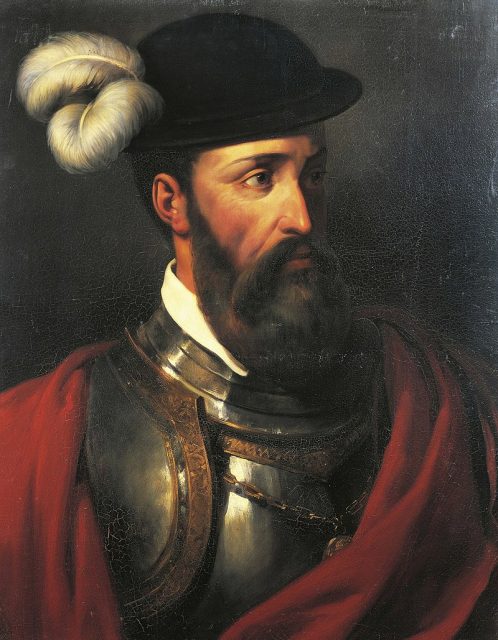
Conquerors like Franciso Pizarro and his predecessor Hernán Cortés defeated entire empires with tiny contingents of men, but their victories were not solely the result of exceptional bravery and daring – as it was with campaigns throughout the colonization of the Americas, victory was assured by the natives’ lack of comparable resources and preparation for the tactics of a modern army.
Pizarro watched Cortés’ conquest of the Aztecs in 1518 with great interest; he was not alone in coveting such an adventure for himself. Cortés’ victory had extended the realm of King Charles I of Spain beyond its already significant borders – 16th century Spain commanded the largest empire a European country had ever possessed.
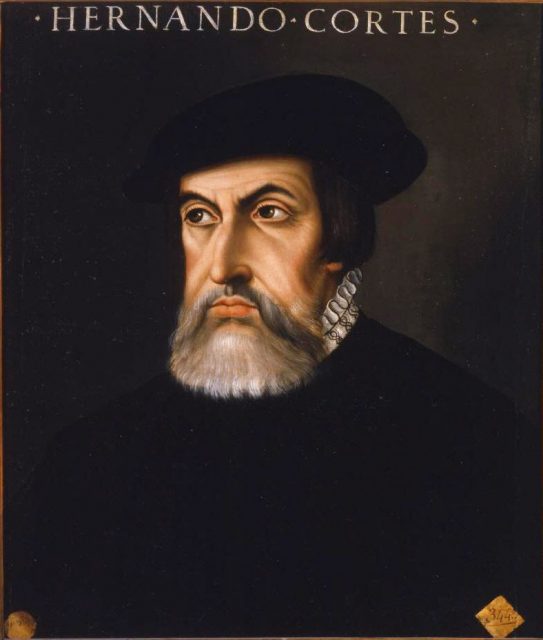
Charles ruled a land and sea empire stretching as far as the Holy Roman Empire on one side to the newest additions in South America on the other. Pizarro was keenly aware of the wealth available for the taking on the American continent and set his sights on the Incan empire, reeling as it was from a war of succession after the death of Sapa Inca (“great Inca”) Huayna Capac in 1527.
The Sapa Inca’s second-eldest surviving son claimed the throne despite the rules of succession granting it to his older brother, and the two engaged in a war that continued until the Battle of Quipaipan in April of 1532. The elder son, Huáscar, was defeated by his younger brother Atahualpa. Atahualpa claimed the title of Sapa Inca, and it was on his march home at the head of 80,000 troops when he met Pizarro at Cajamarca.
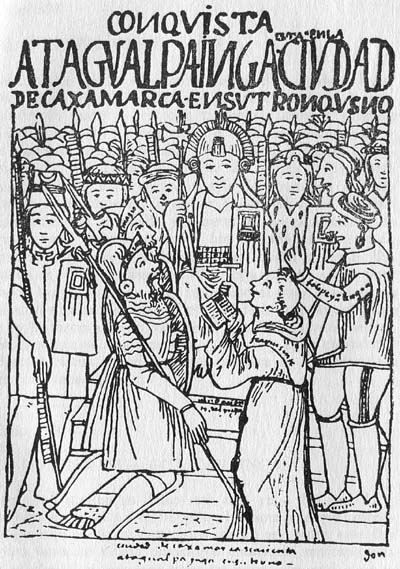
Although Pizarro’s troops numbered only 168, and Atahualpa was aware of their presence at Cajamarca, the former was able to establish an offensive position within the city and formulated an elaborate plan using knowledge extracted from the locals with torture. Firsthand accounts collected in Jared Diamond’s book Gun, Germs and Steel: The Fate of Human Societies, a lengthy study of humanity at war, recall Pizarro’s preparations in detail.
Pizarro divided his infantry and cavalry between his brother, Hernando Pizarro, and another man, Hernando de Soto. They were concealed throughout the main square in Cajamarca where the Inca Sapa was expected to assemble his court, and a small contingent of men carried artillery to a fort within the square.
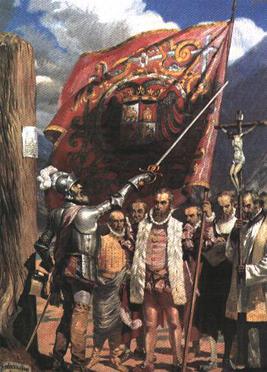
When Pizarro gave the signal, the artillery was to fire and the troops would emerge from hiding and assault the gathered Inca. The Spanish nearly lost their nerve upon seeing the size of the Incan contingent as it filled the square (Atahualpa’s litter alone was carried by 80 members of the Incan nobility), but the Incans were utterly unprepared for Pizarro’s tactics.
The conquistador ordered a clergyman to present himself before the Inca Sapa and identify himself, and when he did so, the curious Atahualpa asked him for his bible. The clergyman obliged, but Atahualpa was puzzled by the object he had just been handed (the Inca did not have a written language), and tossed it on the ground, not realizing what an affront it would be to the Spanish.
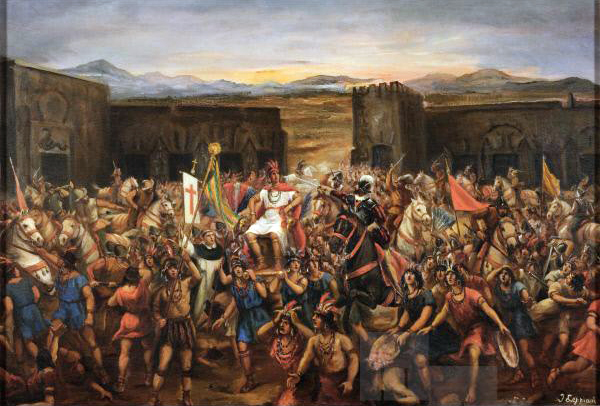
The clergyman returned to Pizarro loudly decrying the sacrilege that had just been committed, and the Spanish set upon the bewildered Inca at once. The assembled court was largely unarmed, and those that were not killed by the hail of bullets or trampled in the panicked exodus that followed fled the city.
Atahualpa was captured in the confusion. He was able to purchase his release sometime later, even converting to Christianity, but Pizarro had him executed for political reasons shortly afterward. The Inca rebelled, but their system of government was not capable of adapting to the toppling of a monarch by such an enemy as the Spanish – they had never faced such a situation, while the Spanish had been thriving on international conflict for decades, if not centuries.
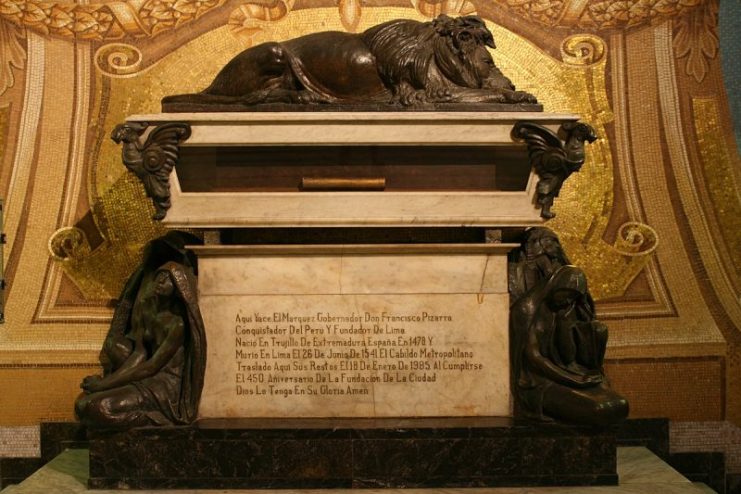
The Incan Empire was unable to reorganize without its emperor, and it was summarily dismantled by the Spanish over the following years. Their systemic disadvantages, combined with the European plagues that had ravaged their nation, had weakened them significantly and Pizarro’s brazen daylight massacre would cripple them beyond recovery.
